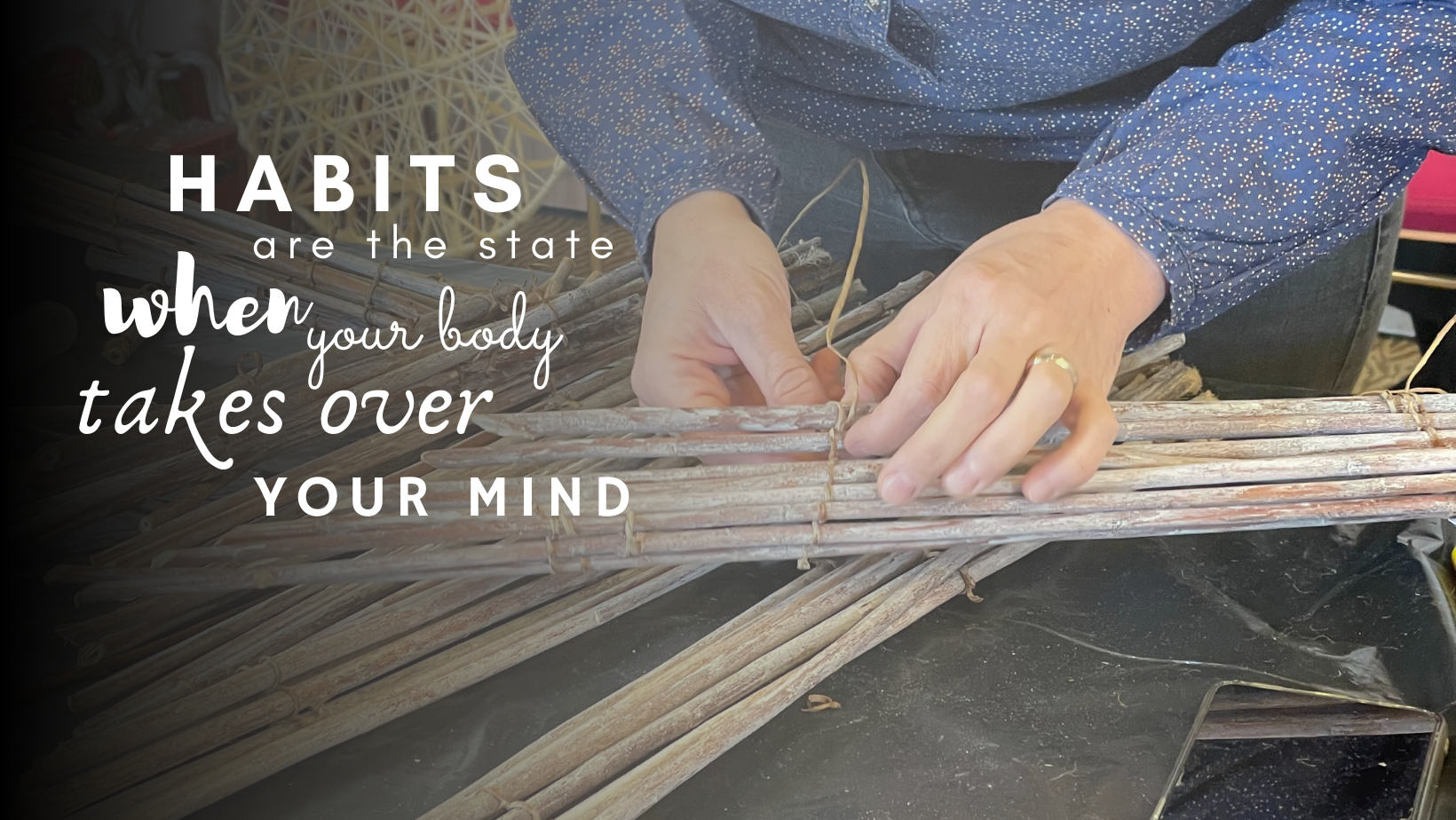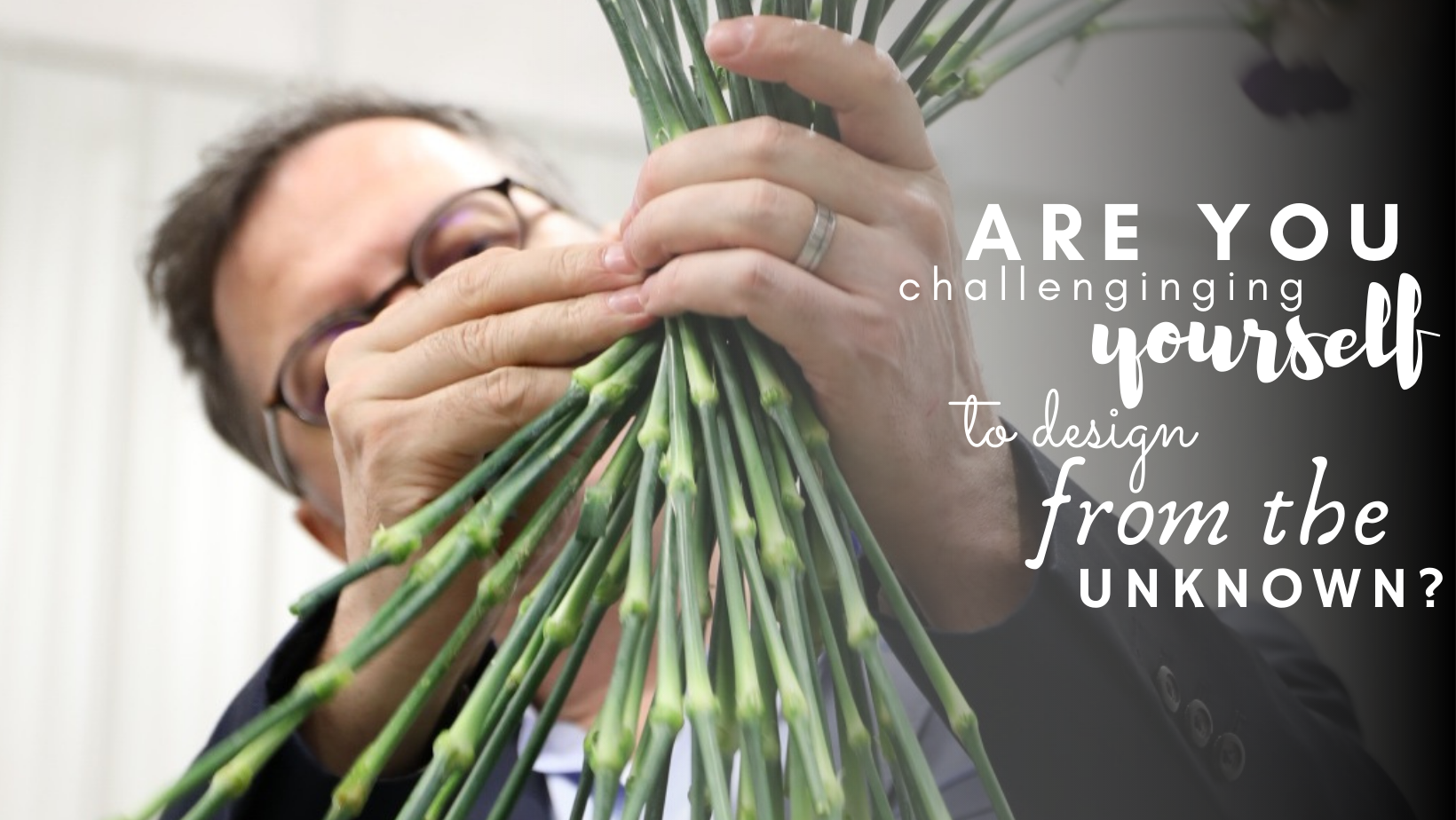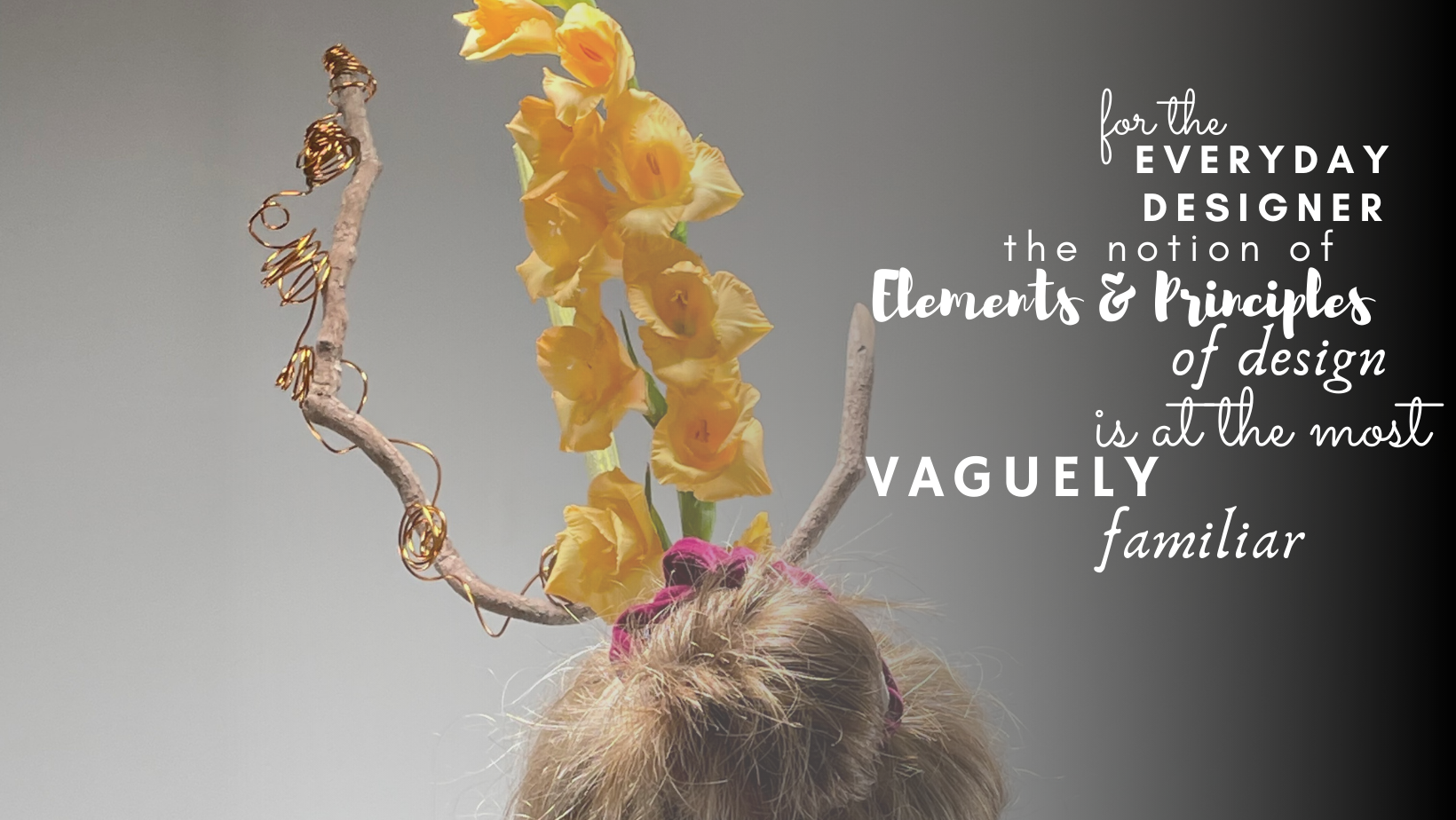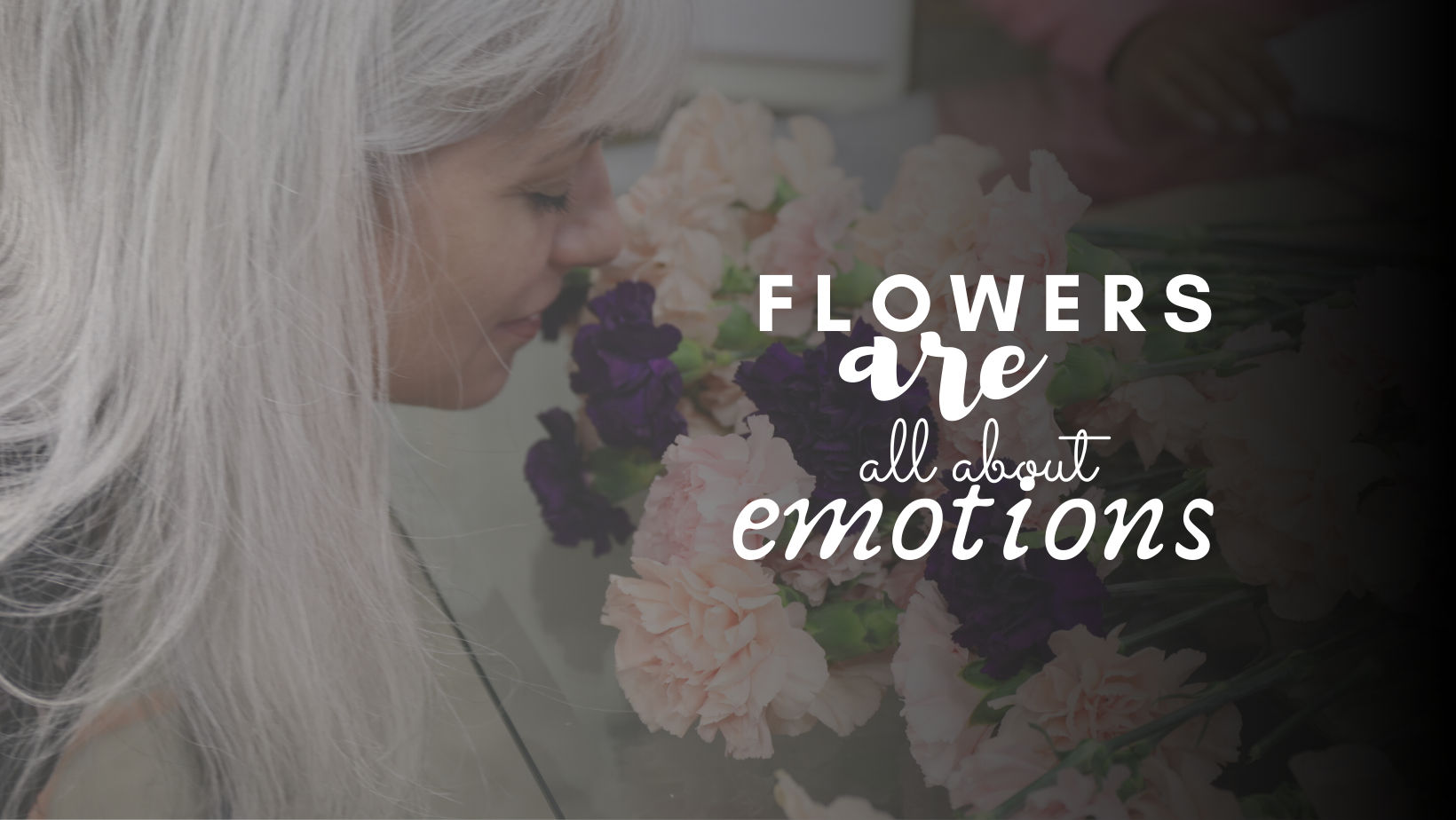Let's talk about the Everyday Designer
Jul 15, 2022The time of habits and hard work
With Tomas De Bruyne, Lead Instructor at EMC
This lecture focuses on the everyday designer, the second stage of floral design. In the previous lecture we have talked about the novice designer, somebody who has just started and just like a student, they have just finished school and they come into the business; they come into the flower shop, or, as it happens in many cases, somebody who has just started out on their own in working with flowers. After being a novice designer, you step up to the next level, which we call the everyday designer. Sometimes we also use the terminology, the survival stage and the reason we do that is because it's all new, you have come up with your business and it starts to work, but you're in a kind of going from day to day mode.
One keyword that is essential in defining this stage in floral design is ‘habits’. You stick to your habits and you also stick to what you know. You feel comfortable with what you know. This is so obvious for an everyday designer. And what happens? You go on and repeat the things you are in the know of and ultimately that is how you build habits. You enter a creative repetition. You are feeling comfortable in what you do. You feel comfortable in what you design and so on. I'm saying this because maybe you recognise yourself within that situation.

Maybe you are an everyday designer or maybe you are going to be an everyday designer because you're still a novice. Or you may say, 'I'm already to the next level'. As an everyday designer, we can say you are designing, but you're designing a little bit more in an unconscious way as your body takes over from your mind. I know this may sound weird, as how can your body take over from your mind? Well, I've learned that from Dr. Joe Dispenza who explains the process of building a habit as starting from a thought, as the first time you do something you have to think about it. Through repetition of action, though, you body becomes familiar with what you do so the though process is no longer needed. The body takes over the mind!
Think about riding a bicycle the first time - actually, I do remember the first time I had to ride a bicycle, and I do remember it was my sister who helped me. I was like, oh yes, I can ride a bicycle. The mind has to teach you how to do, but if you do it every day, you don't have to think about it anymore. Think about when you eat, you take your spoon and you put it directly to your mouth but if you think about a baby, you have to help sometimes when a baby is eating because there is more soup on the face than is actually going into the stomach. What I am trying to say, is the more you do something, the more it becomes a habit, and you don't have to think anymore. So that means creatively wise, we think with the mind, the creative ideas come from the mind, they don't come from the body. If you are in the mode of following the habits, you're not creating new designs. You are not creating innovative designs, but rather you are producing the same design over and over again.
You are not challenging yourself to design something from the unknown. You are not saying to yourself ‘maybe I can do something totally new that nobody has seen, that I don't know and I haven’t seen’. That would mean you are designing and looking to the future because you imagine something. An everyday designer, they are not really into that kind of mindset.

It means that you are not creating something new. You are not open to create something totally different, or to come up with something new. Maybe you do, but not to the point where you will push your limits creative wise constantly.
Working hard defines the way an everyday designer perceives thew floral business. The phrase 'If you work hard, you will get there!' seems to be a guideline that drives the everyday designer and that often times can translate into a financial break even. The drive and desire to succeed are often the motor that pushes florists in this stage to move forward and many times to even work harder! Later, we will see that it's not always true that working so hard is key to success. Especially in creative metiers.
Everyday designers probably stay and limit their activity within their own community because that is where they feel safe. Do you remember in the introductory lecture that I was talking about how the environment is very important? That means they get the creative flow, and they get the creative input, they get the vibes from their own close community. That is what holds you back and does not allow you to grow. They think their method is the best because they are selling well and their clients are happy, so why should they change anything? They feel they are a good designer. Why should they look for more education? They do not see the value in it or regard it as an investment. For most everyday designer, education is a cost. They do not think it will be an investment in their future because they must pay money now. The difference between your cost and investment is if you pay money and nothing is coming back, this is a cost. If something is coming back in return for how you have invested money or the education is proving its worth, that is different. If you invest in a car and it's a good car, you are happy.
When it comes to everyday designer, we can see they have lots of intentions, but the actions do not always match with these intentions. They say ‘I'm going to do this, I have got to know that, I have got to do that’, but the actions that must follow the intentions are not coming. That's the key! Creativity is about intention followed by actions, it's not about intentions alone. Creativity, like I said before is a ‘doing’ word! It is a VERB. You have to go into action. They still avoid challenging themselves to create or challenge themselves to go to the next level. If they do, then, they use the ‘trial and error’ method. They do believe in their ‘trial and error’ method, considering the failed attempt just as a learning opportunity, often not considering the overall costs involved.

Those are a little bit of the elements that we can say define the behaviour and mindset of an every designer. I don't know if that resonates with you or not, but I have to say as well, the degree of passion and the joy of creating in the beginning, when you start as a novice and you begin to work with flowers translates into the early days of an everyday designer. That passion is not lost and the excitement and thrill are still there, but there is a certain risk.... . If you stay too long in this everyday designer stage, you are going to lose your passion, along with money, most probably.
You are going to lose your joy of working, because every day you're going to repeat and every day you're going to be doing the same things. That's the danger of leaning on habits: on one hand you gain speed and a certain degree of efficiency, on the other hand the routine takes over and can become overwhelming. You are losing that creativity that you wanted initially. After all, you wanted to become a florist for that creative spark to ignite your life, to play with flowers, to work with flowers, to create arrangements, to make designs.
Elements and Principles of Design
This notion comes into play in this early stage already, as it offers us a great tool to asses the level a designer is at. We ask ourselves; how does an everyday designer think about the elements and principles of design? It is very likely that the notion of Elements and Principles of Design is at the most just tangentially familiar. An everyday designer may say ‘somebody told me about them’, or they may have went to a demonstration or workshop, and somebody was talking about the elements and principles, but they do not really see the value of it. From knowing about them and acknowledging their existence, to knowing how they work and influence your designs, there's a huge leap.

Nomenclature
Part of the habits an everyday designer has reflects on the choice and knowledge of botanicals as well. Most of the times, people at this stage rely either on their limited knowledge of common flowers, or on the recommendations of their local flower provider. Pinterest or social media groups are most often the source of information and inspiration when it comes to flowers and the focus of the designer on using flowers is generally oriented towards quantity needed, rather than the added value a botanical brings to design.
Moving to the care and handling .... they only know the care and handling for the most common flowers and their basic needs. They do not know, in certain situations, how to do the specialised care and handling, how to condition properly and process their botanicals for long vase life in different conditions, etc. They are not really interested in diving into specifics and researching botanicals to the point where they know their family, genus, species and particularities. The way the care and handling influences the end result of the design is not yet a notion that the everyday design comprehends and therefore, the work put into this action is focus on basic needs and basic treatment. They may or may not have heard of floral food, of a clean 45 degrees angle cut, of proper tools to be used and so on.
Technique and mechanics
This aspect is probably the more thrilling and interesting for an everyday designer. The more the better! The mindset of the everyday designer, as opposed to the novice is shifting towards answering the question "how?", rather than focusing on "what" we make. The everyday designer already know what to make, whether it's the regular deliveries, the event centrepieces, etc. How to actually get those products created and out of the shop or atelier becomes a challenge and for that reason most everyday designer seek answer in techniques and mechanics. 'If I know that technique, I will be more creative' - which is, by the way, not true. It's not by seeing more and more ideas of techniques and mechanics that you become more creative.

I know so many people, who watch the techniques and mechanics being used in different workshops or tutorials yet at the end of the day they are only able to repeat what they saw. Not to mention that often times they forget what they saw as in any learning process there is a 'forgetting curve’ which is way bigger than the learning curve. If you just go through watching numerous how-to-do videos, then you are not actually processing everything. This is quite often a characteristic of the way everyday designers approach new techniques. However, it's better to work on processing information in a conscious way, so that you know what to do. Once again, that comprehensive way of learning comes in latter stages. Bottom line, the everyday designer is all about techniques and mechanics because they think techniques will save them, and techniques in themselves will make them more creative.
Colour
Let's move on to colour! Well, at this level, designers and florists are not really into colour. If you talk to them about colours, they may say ‘it is pretty’, which is a typical phrase. You know, ‘I use that colour because it's pretty’. The colour in itself is not that relevant for the conscious designer, as opposed to the everyday designer. What the colour does for you or what it does for your client is where the focus should be. It is safe to say an everyday designer is not consciously working with colours. The colour palette is chosen by them and by what they think their clients like, and they are not really into considering colour combinations, colour harmonies and colour contrasts as means of conveying a message.
Emotions
Then we get to the emotion ... while flowers are all about emotions, at this level, emotion is not that important. Everyday designers do not value the emotion behind the design, but more the design itself, based on the occasion. They are going to make the flowers for a wedding, and say to the bride, ‘I am going to make a wedding bouquet for you. I going to make a hand-tied bouquet, and it will be with pretty colours just for you’. While that is true and can be an honest statement, the end result is not always showing the personality of the bride, it doesn't show the emotional value for the bride, and so on .... I'm not going too deeply into this, but I am saying that for you, for the everyday designer, the focus is not there yet.

You can ask yourself, what do the five elements have to do with your clientele? If you are in that situation, your clientele is very product orientated, meaning they are shopping for the flowers and shopping for the plants, but they are not really shopping for the added value created on the product, on the botanicals, on your plants and flowers. So as a floral designer, what do you do? You just combine the different botanicals and you come up with arrangements and the more beautifully you combine them, means the more value you have added to your products. Your clients are not really looking for that higher value. Your clients also go to the supermarket to buy flowers, also going possibly to buy from the gas station, or to little shops to buy some flowers, because then they have a bouquet. By the way, I have to say supermarkets and gas stations have quite pretty bouquets. On the other hand, it's a mass market. It's huge and difficult to try to compete with that. If you just sell a product and you do not add extra value, or maybe you do a little bit, you are in a very difficult market and you cannot make yourself different in the market because you're selling a product that everybody can sell. So, as I told you before, I am telling you from my own experience. I went through the five stages myself - I've been there and that's why I feel very confident in telling you. I am not afraid as whatever I tell you is based on my experience, my failures. I failed a lot, but I have to say, when I failed, I got back up. When I was falling, I fell forwards, not backward. I fell forward, got up again and learned from my mistakes.
I remember that when I was working in the flower shop with my girlfriend, I learned a lot from her father. Her father was my teacher. He showed me how to wire. He showed me how to do the cleaning and handling ... but it was all done to his concept, which was good. However, I said to myself, there should be more. There should be more than the twenty to fifty varieties of flowers he buys every week. There should be more flowers. He always bought his favourite flowers. He was pushing me and challenging me to work in the colour palette for their clientele, because he had a certain kind of clientele, rather old-fashioned.
He was pushing me in that direction, which was alright for me in the beginning but after a while, I wanted to go maybe with more avant-garde designs or simplify my arrangements etc. I was on a journey. I said, ‘there should be more’, and that was really after I had been working there for something like half a year. I knew that the cost, time-wise, to go for the ‘trial and error’ was far higher than going to a school. I wanted to grow as quickly as possible, because I knew if I did the ‘trial and error’ method, maybe I would need two years to get to a certain point, if not more. If I went to a school, I would learn from a teacher and the learning process would speed up.

But what I very quickly also realised that if I went to a school, I would have to pay, but I regarded that payment as an investment in myself, in my growth. And I knew that the investment would be lower than the cost of ‘trial and error’, which sums up my time, my flowers, my research.
So why not from the best? That's why I started going to school, and I went to one of the best designers in Belgium to learn, to see, and to experience what it is to work with flowers, to come up with designs and to come up with an insight. That decision really changed my life. What was I actually doing? I was going from a status of WHAT will I make, or WHAT can I make, to status of HOW do I make. I was curious, I wanted to know how it was made. I was already in that state of mind. I was searching to find out how I could lift myself up. I wanted to have more. From that perspective, because I knew I was on the search, I went on that journey.
Pondering questions of the everyday designer
Do we always have to find a balance between commercial and artistic creative designs?
Do you feel sometimes that you love creating, but you miss that creativity?
Commercially, you must always make the same designs, with the same colour palette and the same flowers. You say, ‘I want to go further. I miss that joy of that creativity that challenges me a little bit and allows me to play with something else but there is no space and time. There is no room because I must come up with designs that have to be commercial’. I can tell you that it can be commercial, but in a creative way. Some people cannot see the difference. They say it must be commercial, so creativity must go. It is too artistic. But you can add a creative flavour. You can add an artistic spice. That is what I did in my flower shop. Believe me, my flower shop was a goldmine and soon I am going to talk about my flower shop and how I took the next step as a creative designer.
What is your level of joy? Is it still high? Are you still getting up in the morning with a big smile? Are you saying…I am going to make ten arrangements, totally different, with different techniques, different mechanics, different flowers. I can enjoy myself. How long ago is it since you could say that? How long ago did you ask yourself this question? Do you miss that quality time?
Do you think ‘I work hard, I love my job, but I still have to work hard’. Your partner complains from time to time, and you miss those weekends with your friends. You miss that free time. Do you want to hire people? You are hesitating because you don't know how you can manage financially to pay new employees, as your business is on the edge ... maybe you shouldn't do it or maybe you should. You start to question yourself. Are you in that kind of situation?
What makes an everyday designer and how do you put yourself to the next level? Can a creative designer position themselves better in the market and can you create added value? Now people are really coming to you for your work as the clients are coming because of you as well. Most are coming for the product, less for the added value that you create. How can you create added value to what you make, what you design and still keep a clientele base that ensures your business success?
I said earlier that to move from being a novice, go for guidance. In this case, I'm saying go for a qualified teacher, teaching from a programme, from a methodology, with a system. A certain language that allows you to process something in your design or how to create designs and learn the creative process. The stage of the everyday designer is the right time to make that step. Bridging from this stage to the next, from the everyday designer to the creative designer is one of the hardest moves. As hard as it is, though, such an uplift in your professional life leads to endless possibilities, opens your creative flow and builds confidence!
Don't miss a beat!
New blogs, course offerings and what we are up to delivered to your inbox!
We hate SPAM. We will never sell your information, for any reason.

